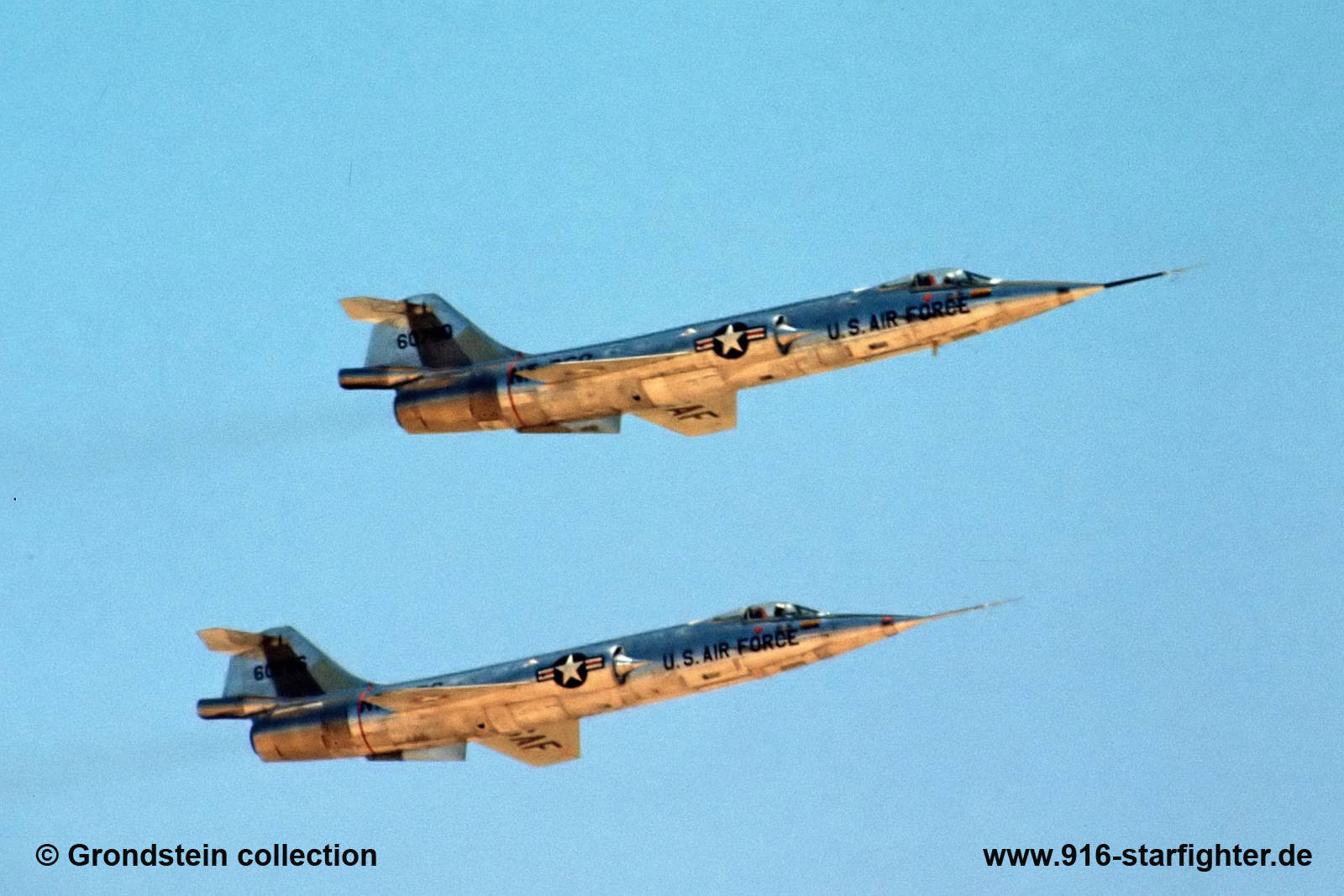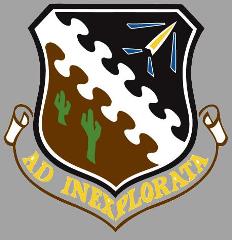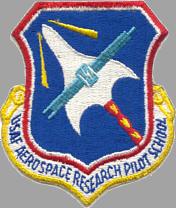
NF-104A "NF-756" and "NF-760" at Edwards AFB in May 1965 Three aircraft were modified from existing Lockheed F-104A airframes and served with the Aerospace Research Pilots School between 1963 and 1971. The first NF-104A (USAF 56-0756) was accepted by the USAF on October 1, 1963. It quickly established a new unofficial altitude record of 118,860 ft (36,230 meter) and surpassed this on December 6, 1963 by achieving an altitude of 120,800 ft (36,800 meter). It suffered an in-flight rocket motor explosion in June 1971. Although the pilot was able to land safely, the damaged aircraft was retired and marked the end of the NF-104 project. This aircraft was reported as scrapped. The second NF-104A (USAF 56-0760) was accepted by the USAF on October 26, 1963. After retirement, this aircraft was mounted on a pole outside the U.S. Air Force Test Pilot School at Edwards Air Force Base and can still be seen there today. The third NF-104A (USAF 56-0762) was delivered to the USAF on 1 November 1963, and was destroyed in a crash while being piloted by Chuck Yeager on December 10, 1963. Typical flight profile The NF-104A was able to reach great altitudes through a combination of zoom climbing (building up a high speed in a shallow dive at high altitude, and then climbing steeply, converting speed and momentum into altitude) and use of the rocket engine (to reach higher level speeds and to maintain climb rate for as long as possible after entering the zoom climb). A typical mission involved a level acceleration at 35,000 feet (10,700 m) to Mach 1.9 where the rocket engine would be ignited, and on reaching Mach 2.1 the aircraft would be pitched up to a climb angle of 50-70° by carefully applying a load equal to 3.5 g. The J-79 afterburner would start to be throttled down at approximately 70,000 feet (21,300 m) followed shortly after by manual fuel cutoff of the main jet engine itself around 85,000 feet (25,900 m) to prevent fast-rising engine temperatures from damaging the turbine stages of the jet engine. After continuing over the top of its ballistic arc the NF-104 would descend back into denser air where the main engine could be restarted using the windmill restart technique for recovery to a landing. copyright © Grondstein collection


